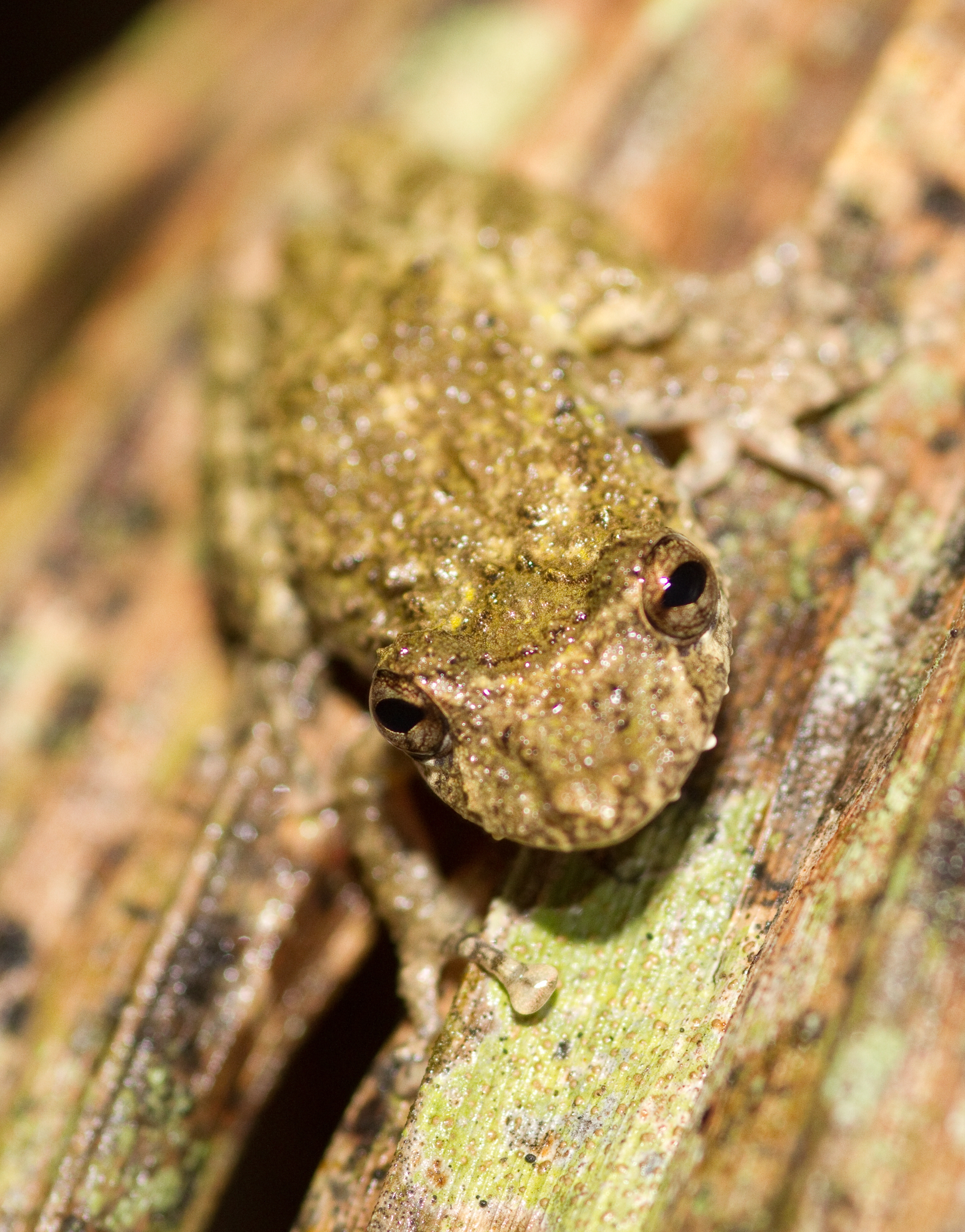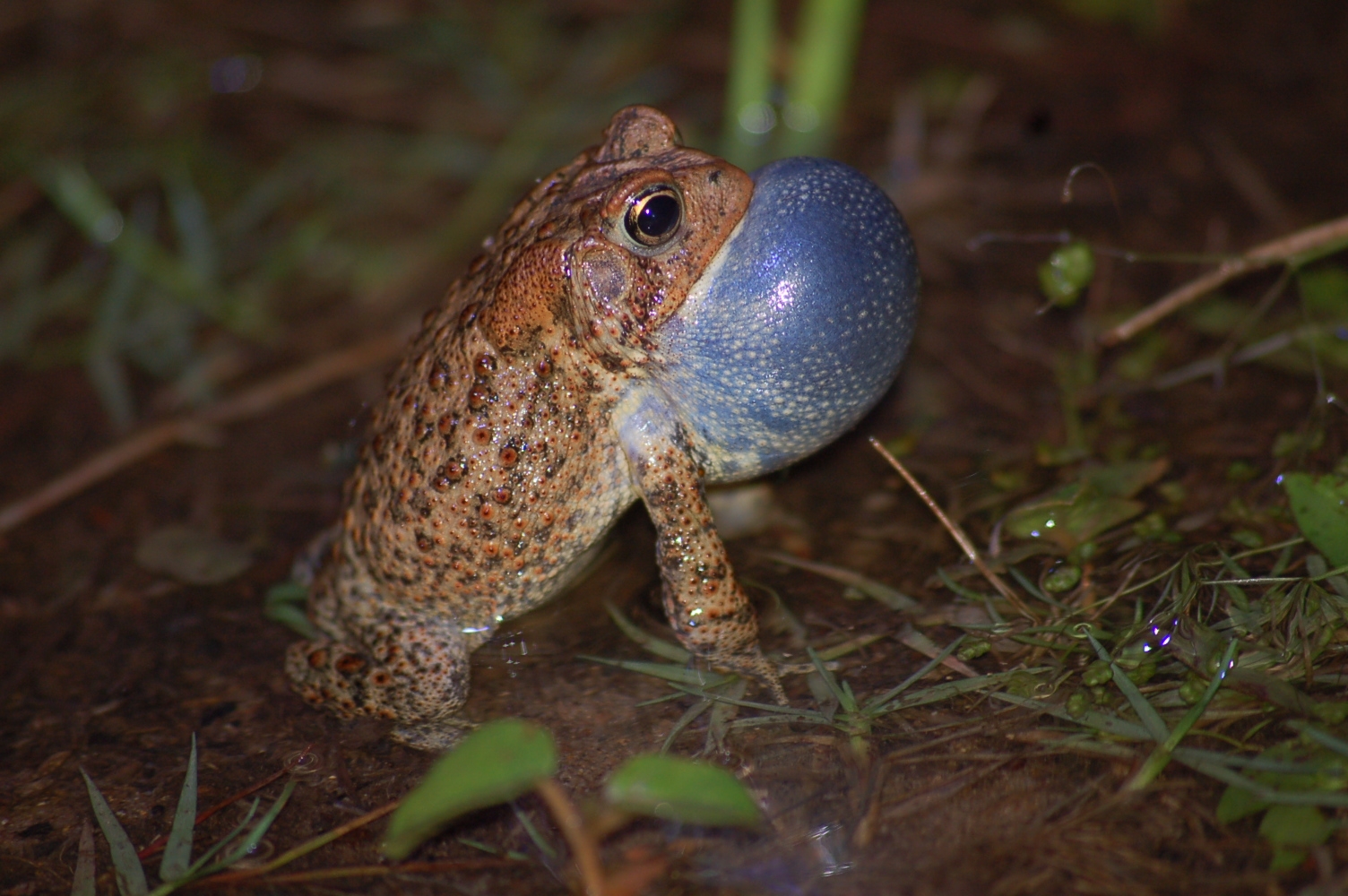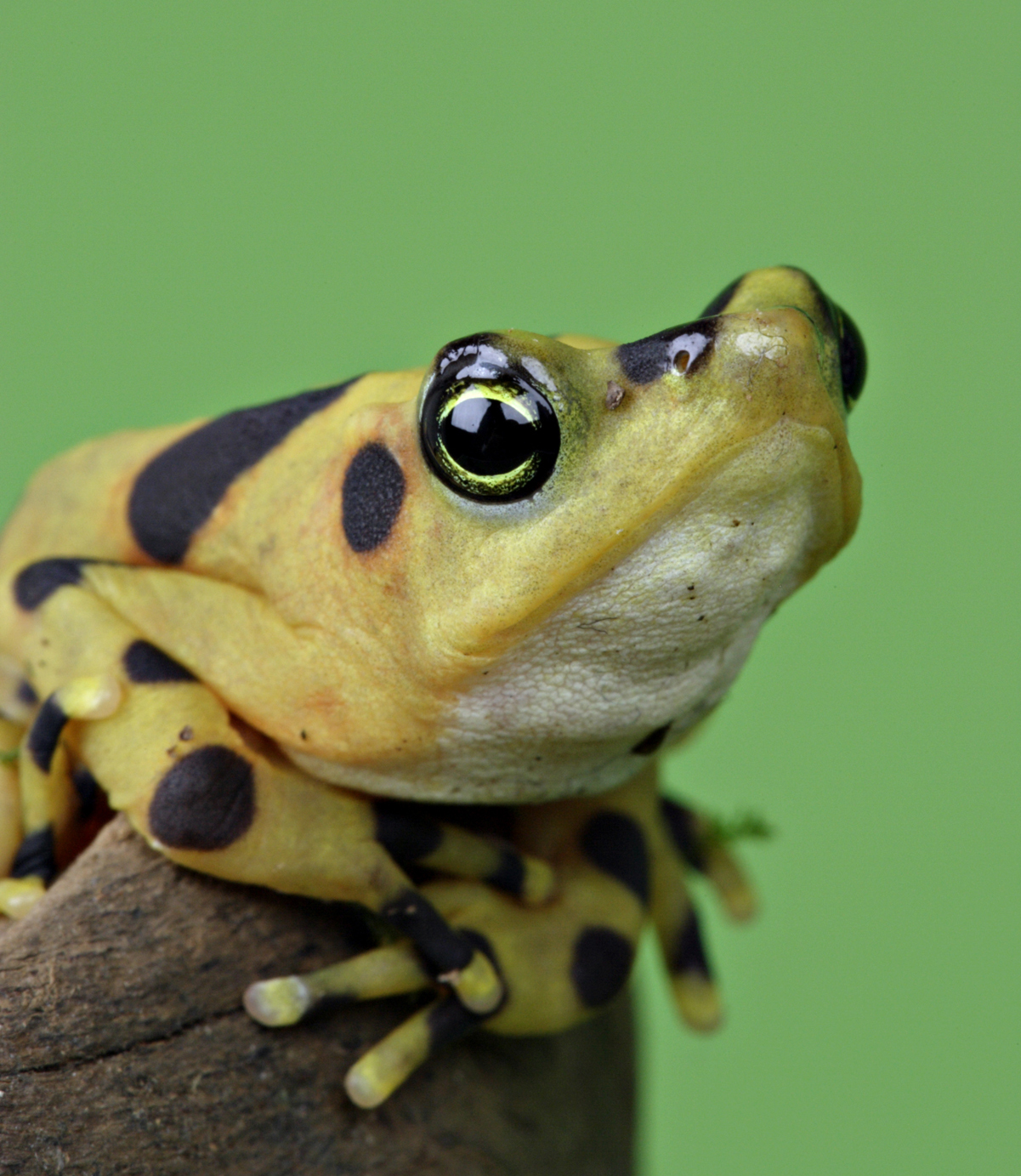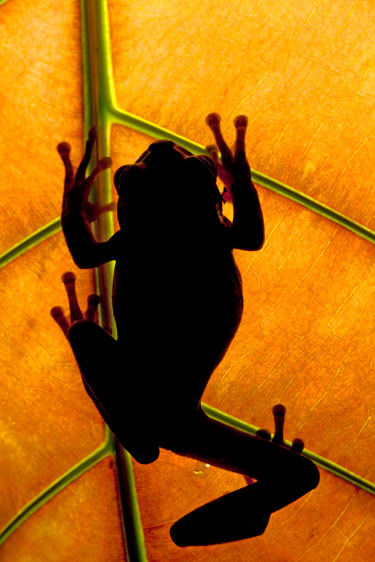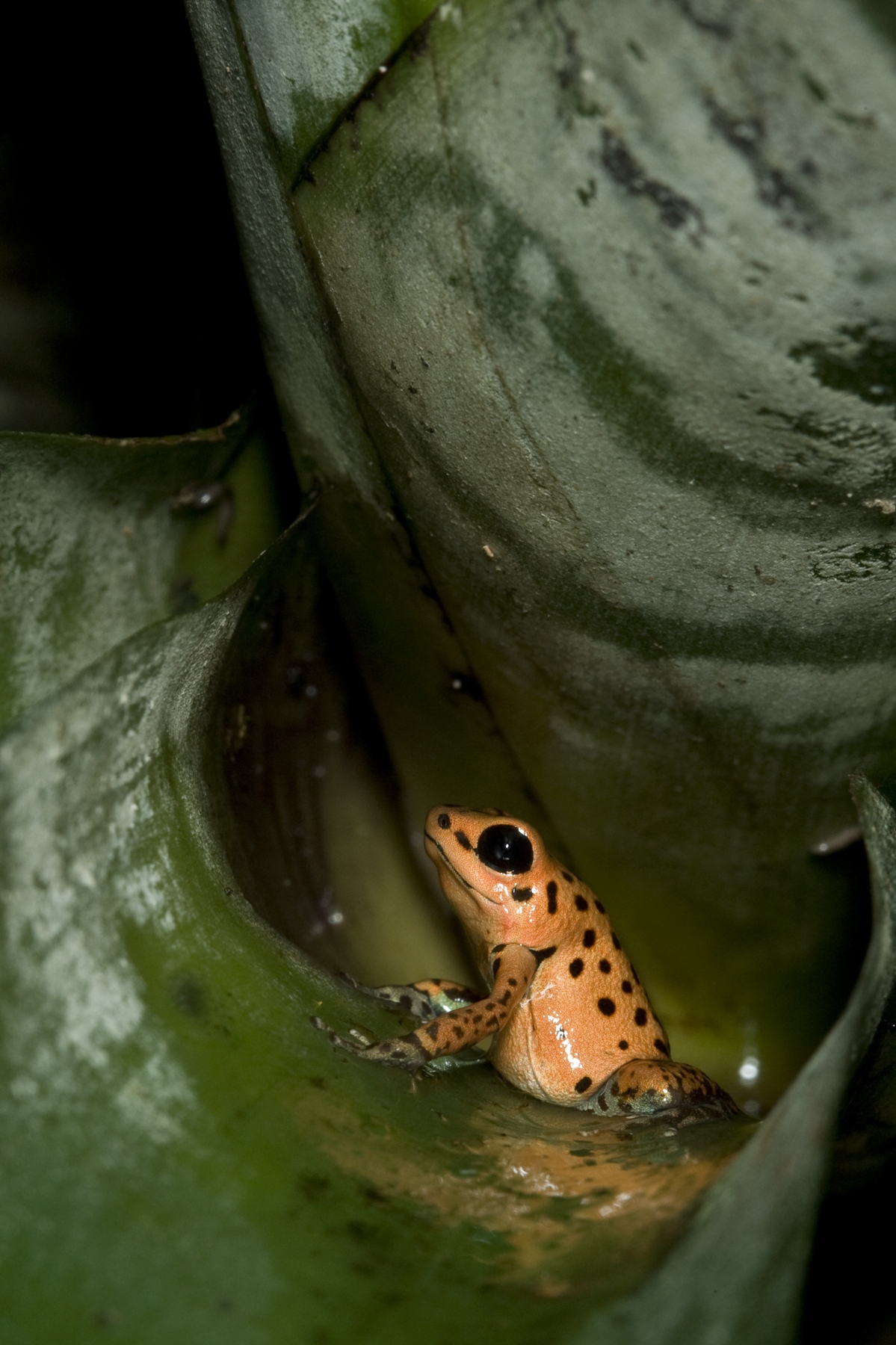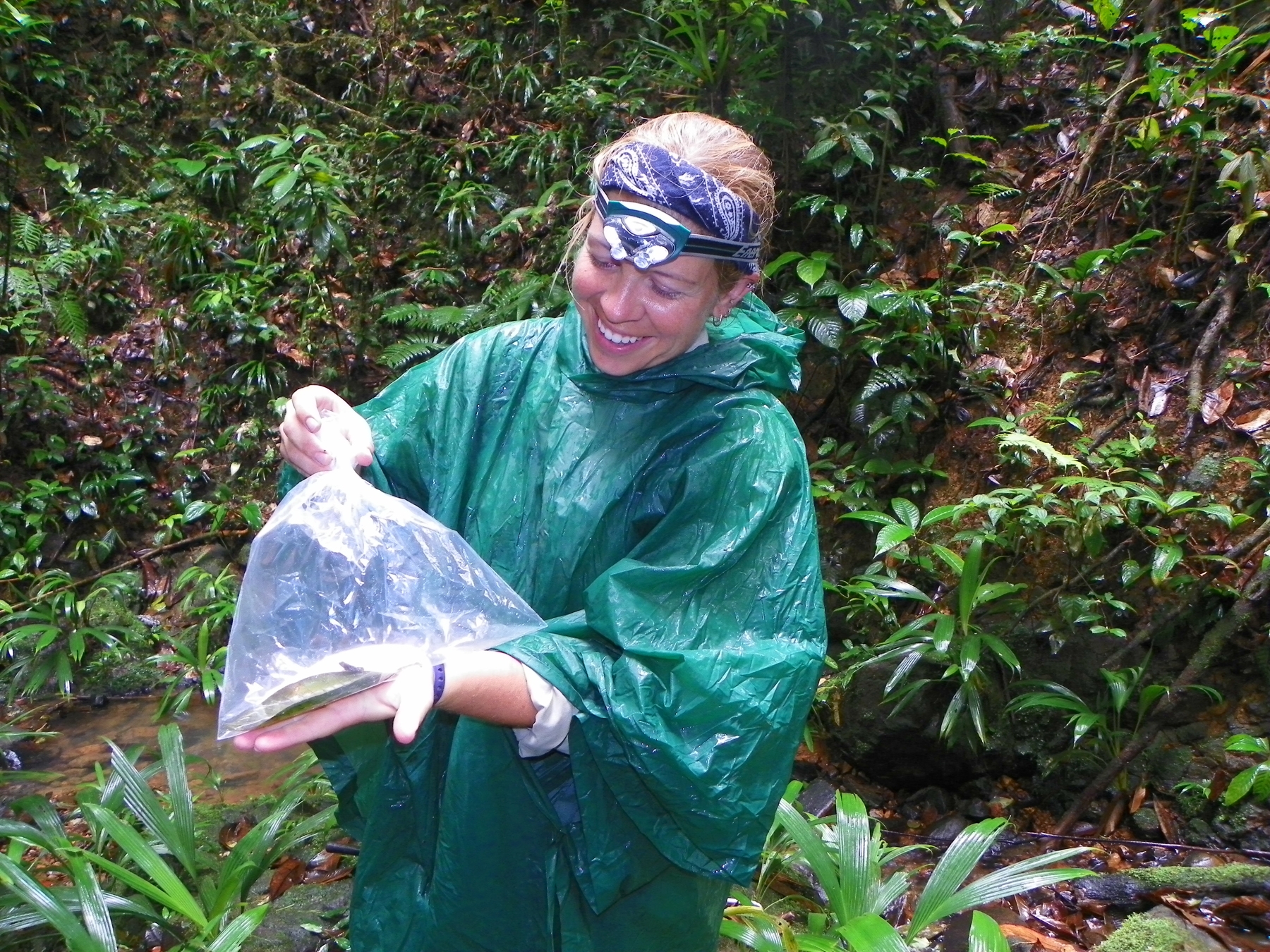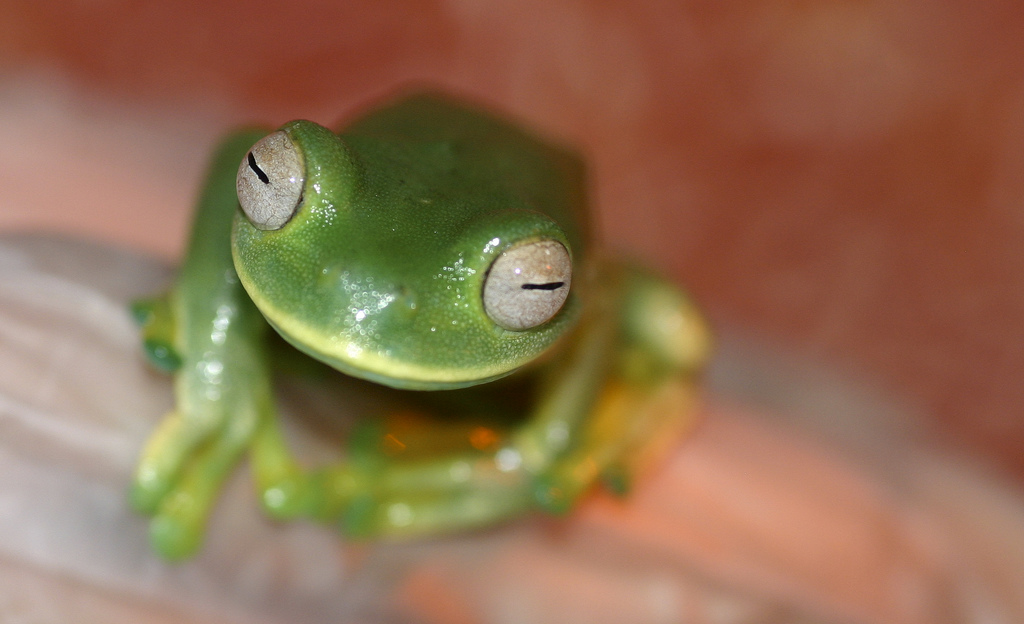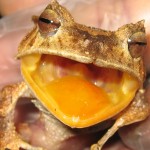Cute Frog of the Week: May 9, 2011
These medium-sized, rainforest-loving frogs are known for their distinctive shape and ability to blend in seamlessly with their environment. The Boulenger’s snouted tree frog (Scinax boulengeri) lives in many tropical regions of the world and differs slightly depending on where it is found: Frogs found in areas of Costa Rica have more nodules on their skin than ones found in the Caribbean lowlands of Central America. This may be a feature that allows the frogs to better navigate their environments.
The Boulenger’s snouted tree frog is also quite a night owl. The frogs are commonly found out and about at night near the forest floor perching on bushes, stumps, logs and low trees. Their nocturnal nature is also important to producing offspring. These frogs have a prolonged breeding period, which lasts from May/June until August, and breed only at night. Males begin congregating at pond breeding sites soon after the first heavy rains of the season and start their 3- to 4-hour calls at dusk in areas bordering bodies of water, rarely moving from that spot during the night. These frogs are relatively common with stable populations and are regarded as secure or “Least Concern” by the IUCN.
Photo credit: Brian Gratwicke, Panama Amphibian Rescue and Conservation Project
Every week the Panama Amphibian Rescue and Conservation Project posts a new photo of a cute frog from anywhere in the world with an interesting, fun and unique story to tell. Be sure to check back every Monday for the latest addition.
Send us your own cute frogs by uploading your photos here: http://www.flickr.com/groups/cutefrogoftheweek/

